Ethnic Groups in China are an inalienable part of China. Some of the minorities even have a history as long as that of the Han people. The ethnic festivals are like living fossils to reveal their past, lifestyles, and culture. Although the festivals and holidays together became a cultural phenomenon deeply rooted in Chinese culture, the festivals' dates, celebrations, and purposes may differ. Let's discover the 12 most fascinating ethnic festivals in China!
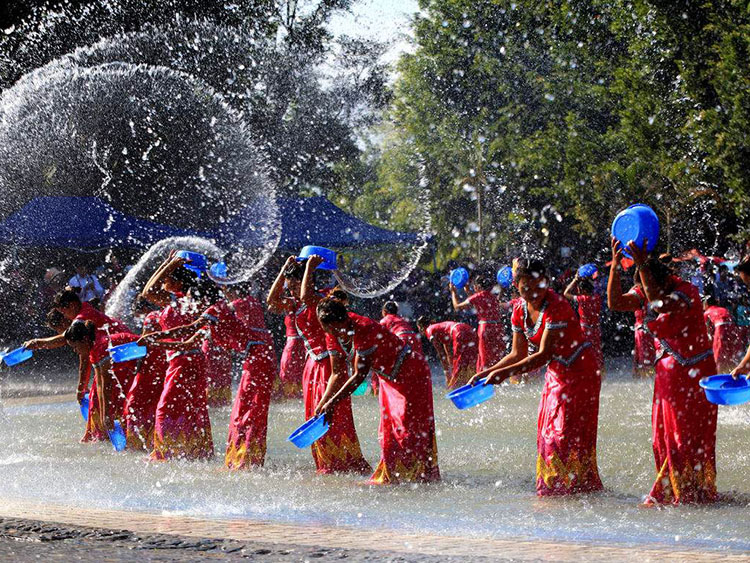 It's usually in the middle of April, which is also the Dai calendar's first month. Therefore, the Water Splashing Festival is also the New Year Festival for Dai people. It's customary that people splash water on the Buddhist statues and each other. The more splash you get, the more blessings you get. There is a beautiful legend about the origin of the Water Splashing Festival. It's said that a devil used to badger with the seven beautiful goddesses, and he released fire to burn them. The fire was so big and uncontrollable that it was spread into the mortal world and continued to burn for 999 days before Dai people finally extinguish it. To memorize these seven brave goddesses, Dai people splash water to each other in the hope of putting out the evil fire of each other, washing off the fatigue and dirt of last year and offering blessings.
It's usually in the middle of April, which is also the Dai calendar's first month. Therefore, the Water Splashing Festival is also the New Year Festival for Dai people. It's customary that people splash water on the Buddhist statues and each other. The more splash you get, the more blessings you get. There is a beautiful legend about the origin of the Water Splashing Festival. It's said that a devil used to badger with the seven beautiful goddesses, and he released fire to burn them. The fire was so big and uncontrollable that it was spread into the mortal world and continued to burn for 999 days before Dai people finally extinguish it. To memorize these seven brave goddesses, Dai people splash water to each other in the hope of putting out the evil fire of each other, washing off the fatigue and dirt of last year and offering blessings.  in the Inner Mongolia, Gansu, Qinghai, and Xinjiang areas. It's held in the late Summer and early Autumn when the weather is most promising, and the festival lasts for about a week. Nadam in the Mongolian language means "game"; therefore, the festival is more of an entertainment holiday when many kinds of traditional Mongolian sports were performed. In the past, a large-scale of sacrificial rituals were a must during the Nadam festival. Nowadays, the programs of the Nadam are mostly sports, including wrestling, horse racing, archery competition, lassoing, and Mongolian chess. In some places, track and field sports, volleyball, basketball, tug of war, and many spectacular performances like martial arts, polo, and horse riding were also played.
in the Inner Mongolia, Gansu, Qinghai, and Xinjiang areas. It's held in the late Summer and early Autumn when the weather is most promising, and the festival lasts for about a week. Nadam in the Mongolian language means "game"; therefore, the festival is more of an entertainment holiday when many kinds of traditional Mongolian sports were performed. In the past, a large-scale of sacrificial rituals were a must during the Nadam festival. Nowadays, the programs of the Nadam are mostly sports, including wrestling, horse racing, archery competition, lassoing, and Mongolian chess. In some places, track and field sports, volleyball, basketball, tug of war, and many spectacular performances like martial arts, polo, and horse riding were also played.  Yunnan province, but the grandest Torch Festival is held in Yi people. It’s usually around Jun. 24th/25th of the Chinese lunar calendar. The Torch Festival was originally a pure sacrificial activity for Yi and Bai ancestors to offer sacrifice and pray for a good harvest in the next year. On the night of the Torch Festival, a large torch with a height of 3 meters will be set up, and people from neighboring villages will come and place their small torch around the big torch, signaling their willingness to work together. People will wear festive costumes, sing and dance around the torch all night. Some activities are just for men, including wrestling, horse racing, bullfight, goat-fight, and pole climbing. While women mostly sing, dance, and offer toasts to men.
Yunnan province, but the grandest Torch Festival is held in Yi people. It’s usually around Jun. 24th/25th of the Chinese lunar calendar. The Torch Festival was originally a pure sacrificial activity for Yi and Bai ancestors to offer sacrifice and pray for a good harvest in the next year. On the night of the Torch Festival, a large torch with a height of 3 meters will be set up, and people from neighboring villages will come and place their small torch around the big torch, signaling their willingness to work together. People will wear festive costumes, sing and dance around the torch all night. Some activities are just for men, including wrestling, horse racing, bullfight, goat-fight, and pole climbing. While women mostly sing, dance, and offer toasts to men. 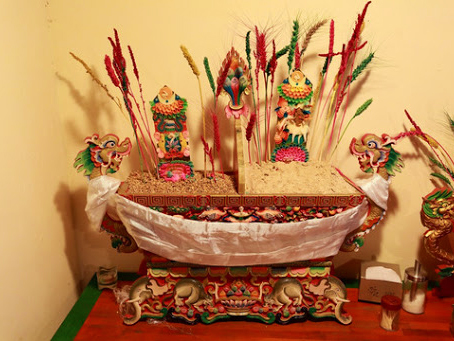 People in different parts of Tibet celebrate the New Year at slightly different times, mostly on Jan.1st of the Tibetan calendar. Like the Chinese New Year Festival customs, Tibetans clean their houses before New Year’s Eve and hold a ceremonious Tiao Shen Hui (Party of Sorcerer Dancing) the day before New Year's Day. People wear gorgeous traditional costumes, wear grotesque masks, and sing and dance with the accompaniment of the instruments like conch, drums, and suona. On New Year’s Eve, people will have a feast of pancakes, milk cakes, sausage, and meat. On the morning of New Year’s Day, women will go to the river or well to carry the "auspicious water," wishing their families to have an auspicious year. They will then place a tribute of a painted rectangular plate filled with grains and pastries on a big red table and give toasts and Hada and express their blessings at the table. During the Tibetan New Year Festival, people also pay visits to their friends and relatives. They also change the colorful prayer flags on their roofs to wish for a good new year.
People in different parts of Tibet celebrate the New Year at slightly different times, mostly on Jan.1st of the Tibetan calendar. Like the Chinese New Year Festival customs, Tibetans clean their houses before New Year’s Eve and hold a ceremonious Tiao Shen Hui (Party of Sorcerer Dancing) the day before New Year's Day. People wear gorgeous traditional costumes, wear grotesque masks, and sing and dance with the accompaniment of the instruments like conch, drums, and suona. On New Year’s Eve, people will have a feast of pancakes, milk cakes, sausage, and meat. On the morning of New Year’s Day, women will go to the river or well to carry the "auspicious water," wishing their families to have an auspicious year. They will then place a tribute of a painted rectangular plate filled with grains and pastries on a big red table and give toasts and Hada and express their blessings at the table. During the Tibetan New Year Festival, people also pay visits to their friends and relatives. They also change the colorful prayer flags on their roofs to wish for a good new year.  is one of the grandest festivals in the Zhuang people. At the festival, there will be an extravagant Folk Song Fair. People from neighboring communities will come together and sing. Young men and women can have antiphonal singing. If they like each other, colored eggs are exchanged as a love token. Other activities include throwing an embroidered ball (the boy who caught the ball thrown by the girl often expected to ask the girl out) and touching the colored eggs. Besides, a kind of five-colored glutinous rice is usually prepared in the hope of bringing luck to people.
is one of the grandest festivals in the Zhuang people. At the festival, there will be an extravagant Folk Song Fair. People from neighboring communities will come together and sing. Young men and women can have antiphonal singing. If they like each other, colored eggs are exchanged as a love token. Other activities include throwing an embroidered ball (the boy who caught the ball thrown by the girl often expected to ask the girl out) and touching the colored eggs. Besides, a kind of five-colored glutinous rice is usually prepared in the hope of bringing luck to people. 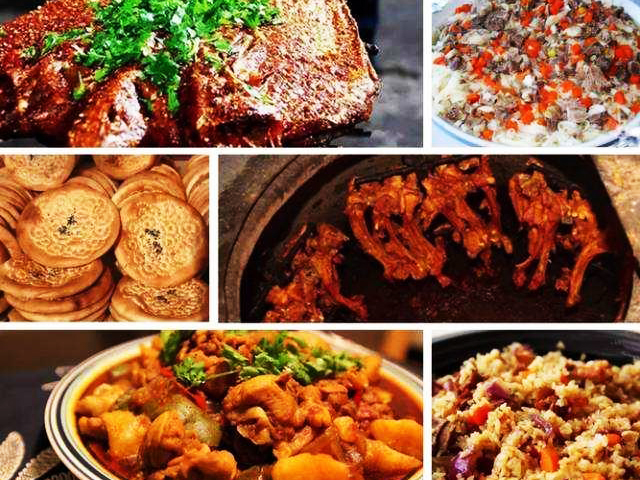 Every September of the Islamic calendar is the month of fast when Hui males over 12 years old and females over 9 abstain from meat, lust, desire, hurt and other things considered inappropriate. It lasts at least 30 days. At the Lesser Bairam, people will clean their house, change clothes, and decorate the mosques. Men will go to the local Mosque, give the poor money, listen to the imam’s preach, and attend the religious conference. Women will prepare a grand feast at home. People will also visit each other and give presents and blessings.
Every September of the Islamic calendar is the month of fast when Hui males over 12 years old and females over 9 abstain from meat, lust, desire, hurt and other things considered inappropriate. It lasts at least 30 days. At the Lesser Bairam, people will clean their house, change clothes, and decorate the mosques. Men will go to the local Mosque, give the poor money, listen to the imam’s preach, and attend the religious conference. Women will prepare a grand feast at home. People will also visit each other and give presents and blessings. It lasts from September to December. Before the New Year, Miao people will clean their house and prepare a lot of food. On New Year’s Eve, girls will compete for new water and shoulder silver jewelry, while boys will drive the sheep and cows to the fence, wishing a good harvest in the next year. On the first day of the new year, sacrifices will be offered to the Dragon God. On the second day, parents will send food to their married daughters. After the third day of the new year, the same village's Miao people will come together and visit another town for three days. Together, they will have many exciting activities like horse fighting, birds fighting, bullfighting, singing competition, wrestling, and many others. Young men and women often sing together and look for their ideal partners on occasion.
It lasts from September to December. Before the New Year, Miao people will clean their house and prepare a lot of food. On New Year’s Eve, girls will compete for new water and shoulder silver jewelry, while boys will drive the sheep and cows to the fence, wishing a good harvest in the next year. On the first day of the new year, sacrifices will be offered to the Dragon God. On the second day, parents will send food to their married daughters. After the third day of the new year, the same village's Miao people will come together and visit another town for three days. Together, they will have many exciting activities like horse fighting, birds fighting, bullfighting, singing competition, wrestling, and many others. Young men and women often sing together and look for their ideal partners on occasion.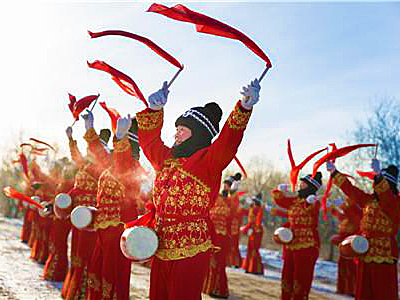
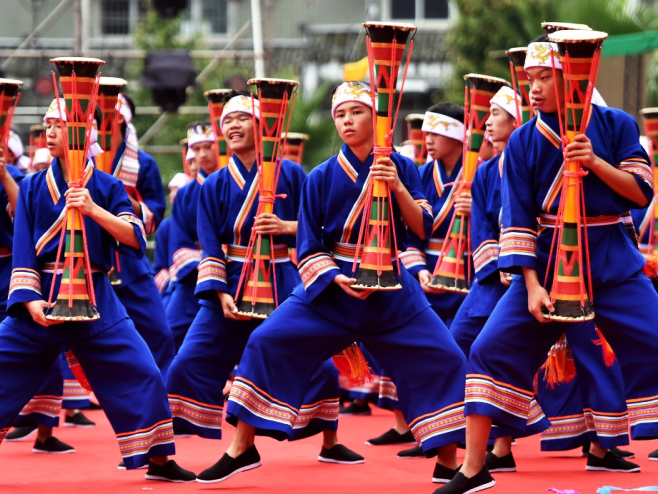 which happened to be his birthday. To express their gratitude, Yao people made glutinous rice cake and celebrated King Pan’s birthday by singing and dancing. Since then, Oct.16th became an important date for the Yao people. Besides food, singing, and dancing, Yao people also play long drums during the celebration. It’s said that the Yao people were exploited and oppressed by officials after the death of King Pan, and the Yao people wanted justice from the Jade Emperor. However, they can’t get the message to the Jade Emperor without being discovered by the officials. Therefore, Yao people pretended to play the long drums for the Jade Emperor and hid the message inside one drum. Nowadays, playing long drums, singing paeans for King Pan, and performing dances are customary parts of the Panwang Festival celebration.
which happened to be his birthday. To express their gratitude, Yao people made glutinous rice cake and celebrated King Pan’s birthday by singing and dancing. Since then, Oct.16th became an important date for the Yao people. Besides food, singing, and dancing, Yao people also play long drums during the celebration. It’s said that the Yao people were exploited and oppressed by officials after the death of King Pan, and the Yao people wanted justice from the Jade Emperor. However, they can’t get the message to the Jade Emperor without being discovered by the officials. Therefore, Yao people pretended to play the long drums for the Jade Emperor and hid the message inside one drum. Nowadays, playing long drums, singing paeans for King Pan, and performing dances are customary parts of the Panwang Festival celebration.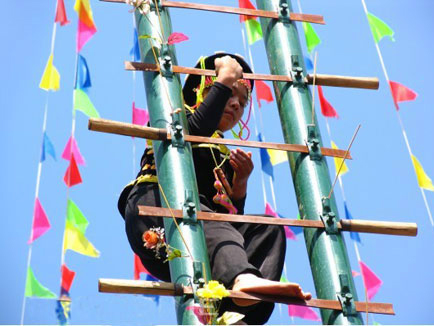 There is a beautiful legend that a minister named Wang Ji was sent to rule the Lisu people in the Ming Dynasty. He was very generous and enjoyed great fame among the Lisu people. He also led the army to fight against the enemies who trespassed the southwest frontier to harass the Lisu people. Unfortunately, the minister Wang Ji who led the army, was framed to death by other treacherous ministers. To commemorate Wang Ji and the Lisu warriors who died in the battle, the Lisu people set the date lunar Feb.8 as the Knife-Pole Festival. On the day before the festival, five sturdy Lisu men jump in the burning flames and pass on fireballs. At the festival, Lisu people will wear traditional costumes and put up a 20m-long ladder made of bamboos and long knives. Brave men will be bare-footed to climb the knife ladder. Not only that, but the performers also need to do all kinds of acrobatic movements. When they get to the top of the knife ladder, people will cheer for them and set firecrackers.
There is a beautiful legend that a minister named Wang Ji was sent to rule the Lisu people in the Ming Dynasty. He was very generous and enjoyed great fame among the Lisu people. He also led the army to fight against the enemies who trespassed the southwest frontier to harass the Lisu people. Unfortunately, the minister Wang Ji who led the army, was framed to death by other treacherous ministers. To commemorate Wang Ji and the Lisu warriors who died in the battle, the Lisu people set the date lunar Feb.8 as the Knife-Pole Festival. On the day before the festival, five sturdy Lisu men jump in the burning flames and pass on fireballs. At the festival, Lisu people will wear traditional costumes and put up a 20m-long ladder made of bamboos and long knives. Brave men will be bare-footed to climb the knife ladder. Not only that, but the performers also need to do all kinds of acrobatic movements. When they get to the top of the knife ladder, people will cheer for them and set firecrackers. 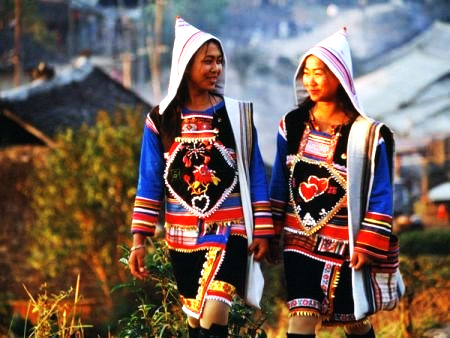 both mentally and physiologically. They can't assume obligations and enjoy the rights as grown-ups. While after they turned to 15 or 16, they are old enough to be considered adults. Boys will be taken by surprise to a particular place and have a feast with other men. Their parents will then offer them a whole set of farming tools, a box with areca-nut, a box with lime, and new clothes embroidered with patterns. The elders will lead people to sing epics and educate the boys about the history of nationality. While girls need to be approved by the women's organization, they will also receive farming tools and clothes from their parents. Girls will have much brighter and gorgeous dresses, and their hair can only be made into a single braid. Adult Ceremony is a significant turning point for girls and boys. After the ceremony, they will be a formal member of the village and have the same responsibilities and rights as adults.
both mentally and physiologically. They can't assume obligations and enjoy the rights as grown-ups. While after they turned to 15 or 16, they are old enough to be considered adults. Boys will be taken by surprise to a particular place and have a feast with other men. Their parents will then offer them a whole set of farming tools, a box with areca-nut, a box with lime, and new clothes embroidered with patterns. The elders will lead people to sing epics and educate the boys about the history of nationality. While girls need to be approved by the women's organization, they will also receive farming tools and clothes from their parents. Girls will have much brighter and gorgeous dresses, and their hair can only be made into a single braid. Adult Ceremony is a significant turning point for girls and boys. After the ceremony, they will be a formal member of the village and have the same responsibilities and rights as adults.  It lasts from Mar.15 to Mar.21. According to legend, the March Fair was modeled after the fairs on the moon that the Dali people's ancestors dreamed. Therefore, the March Fair in Dali is also called Moon Street. Various stalls sell local snacks and handicrafts and entertainment activities like lion dance, horse racing, dancing, archery, and dinging during the holiday. A fascinating thing about the March Fair is the free market. It's really fun to wander at such a hustling and bustling fair.
It lasts from Mar.15 to Mar.21. According to legend, the March Fair was modeled after the fairs on the moon that the Dali people's ancestors dreamed. Therefore, the March Fair in Dali is also called Moon Street. Various stalls sell local snacks and handicrafts and entertainment activities like lion dance, horse racing, dancing, archery, and dinging during the holiday. A fascinating thing about the March Fair is the free market. It's really fun to wander at such a hustling and bustling fair.
4 Days Li River and Terraces Tour
Tibet Culture Tour to Lhasa and Tsedang
8-day Xinjiang Tour to Urumqi, Turpan and Kashgar
8-day Yunnan Classic Tour to Kunming, Dali, Lijiang and Shangri-la
Copyright © 2019 Lily Sun China Tours International, Inc. Terms &conditions | Privacy Policy | Sitemap